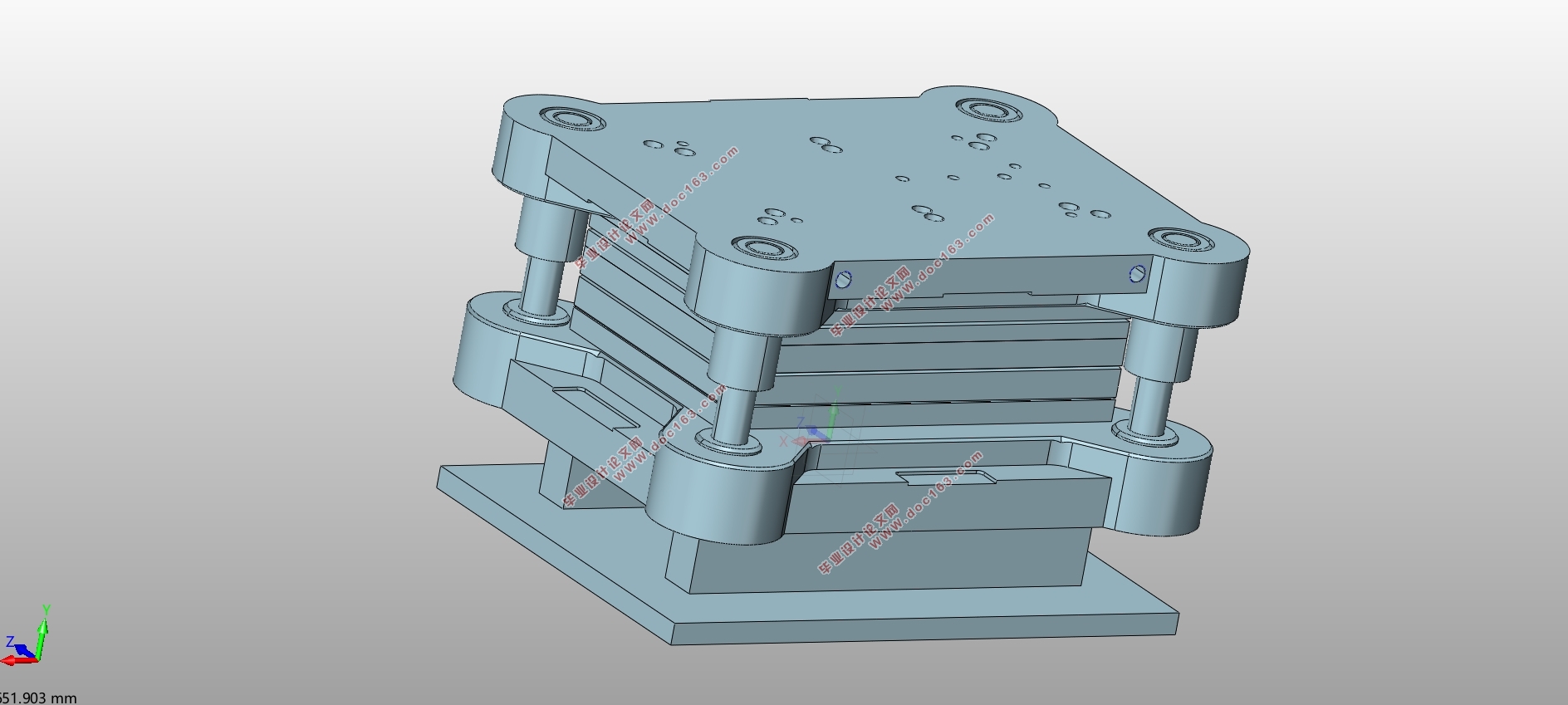风叶件冲压工艺与模具设计(含CAD图,PROE三维图)

1.无需注册登录,支付后按照提示操作即可获取该资料.
2.资料以网页介绍的为准,下载后不会有水印.资料仅供学习参考之用.
密 惠 保
风叶件冲压工艺与模具设计(含CAD图,PROE三维图)(任务书,开题报告,外文翻译,论文说明书14000字,CAD图纸9张,PROE三维图)
摘要
本文详细分析了小型风叶件的结构特点,根据生产要求设计制件尺寸并确定了生产该制件所需的工艺,涉及到的工艺有冲裁、拉深、翻边和弯曲。综合考虑制件结构特点以及三种冲模的优势,最终确定使用多工位级进模进行生产。由于拉深工序对材料的外形影响较大,将它放在第一工位,为了避免工序之间的干涉,还要设置工艺切口,将工序合理排布后设计排样图,之后完成了主要模具工作部位的尺寸设计以及其他零件和装置的选型,选择好压力机后校核是否合适。最后对整个模具的工作原理进行阐述。利用Pro/E软件对整套模具进行三维建模并绘制其装配图和主要零件的零件图。利用deform软件对拉深工序进行模拟仿真,并分析其成形结果,过程中发现坯料的外形对拉深的影响。最后对整套模具进行成本分析。
关键词:风叶件 级进模 模具设计
Abstract
In this paper, the structural characteristics of small wind blade parts are analyzed in detail. According to the production requirements, the size of the parts is designed and the process required for the production of the parts is determined. The processes involved are blanking, drawing, flanging and bending. Taking into account the structural characteristics of the parts and the advantages of the three punching dies, the multi-position progressive die is finally determined to be used for production. Because the drawing process has a great influence on the shape of the material, it should be placed in the first position. In order to avoid interference between the processes, process incisions should be set up. After reasonable arrangement of the processes, layout drawings should be designed. After that, the size design of the main working parts of the die and the selection of other parts and devices should be completed, and the appropriateness of the post-check of the press should be selected. Finally, the working principle of the whole die is described. Pro/E software is used to build the three-dimensional model of the whole set of dies and draw the assembly drawings and the parts drawings of the main parts. The drawing process was simulated by deform software, and the forming results were analyzed. The influence of blank shape on drawing process was found. Finally, the cost of the whole set of dies is analyzed.
Key Words:Wind blade;progressive die;mold design
目标零件工艺分析
某小电机风叶件,材料为08F钢, ,料厚为1.0mm,年产量大。由于对电极转动时动平衡要求高(动平衡在0.1mm以内),这样给冲压工艺提出了更高的要求。
[资料来源:THINK58.com]




 [来源:http://www.think58.com]
[来源:http://www.think58.com] 
目录
第1章 绪论 1
1.1国内外模具行业现状 1
1.2冲压模具的发展及各类冲压模的特点 2
第2章 目标零件工艺分析及工艺计算 4
2.1目标零件工艺分析 4
2.3毛坯尺寸计算 5
2.4排样分析 5
2.4.1工艺切口形式 6
2.4.2带料宽度与步距计算 6
2.4.3带料拉深系数和相对拉深高度 7
2.4.4排样图设计 7
2.5冲压工艺力的确定 8
2.5.1冲裁工艺力计算 8
2.5.2拉深工艺力的确定 9
2.5.3翻边工艺力的确定 10
第3章 主要工位模具设计 11
3.1拉深凸模与凹模设计 11
3.2拉深工序有限元分析 12
3.2.1建模过程 13
3.2.2结果分析 13
3.3 翻边预冲孔凸模与凹模设计 14
3.4翻边凸模与凹模设计 15
3.5冲切弯曲凸模与凹模设计 16
第4章 其它零件选取及模具工作原理 18
4.1模架与导向装置 18
4.2卸料装置 18
4.3导料、托料装置 18
4.4其他零件选取 19
4.5压力机选型 19
4.5压力机校核 20
4.6模具工作原理 20
4.7模具成本核算 23
第5章 小结 24
参考文献 25 [资料来源:www.THINK58.com]
上一篇:轴盖件冲压工艺与模具设计(含CAD零件装配图,PROE三维图)
